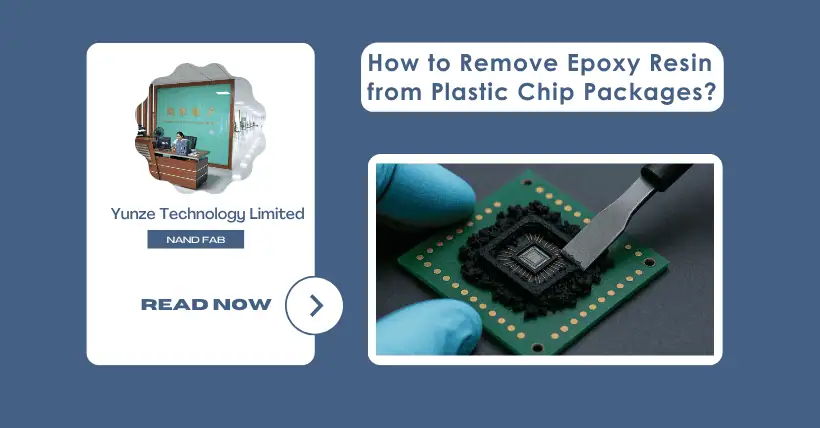How can the epoxy resin surrounding a packaged chip be removed? I want to study the chip’s structure—are there any methods?
01
What does a packaged chip look like?
A packaged chip typically consists of:
- The chip itself – This part is protected inside the package and can only be seen after the package is opened.
- The casing – Usually made of epoxy resin, ceramic, or metal materials. The casing protects the internal chip from physical damage and environmental factors.
- The pins – One end of the pins is connected to the chip’s pads, and the other end extends outside the package to be mounted on a circuit board. Through these metal pins, the chip can transmit electrical signals to external circuits.
02
Why open a chip package?
- Failure analysis – Chips may malfunction during use. To identify the cause of failure, engineers will open the package for inspection.
- Reverse engineering – Sometimes, competitor chips are opened to study their design, architecture, and manufacturing processes.
03
How to open a plastic packaged chip?
There are generally two methods: chemical decapsulation and laser decapsulation.
- Chemical decapsulation: Usually involves using chemical reagents (such as fuming nitric acid and concentrated sulfuric acid) to corrode and remove the packaging material. This method is low-cost but difficult to precisely control.
- Laser decapsulation: Uses laser equipment to remove the packaging material. This method is highly precise and fast, suitable for handling various metal connections such as aluminum, copper, and gold wires. Compared to chemical methods, laser decapsulation is more accurate and uses fewer chemicals.

Disclaimer:
- This channel does not make any representations or warranties regarding the availability, accuracy, timeliness, effectiveness, or completeness of any information posted. It hereby disclaims any liability or consequences arising from the use of the information.
- This channel is non-commercial and non-profit. The re-posted content does not signify endorsement of its views or responsibility for its authenticity. It does not intend to constitute any other guidance. This channel is not liable for any inaccuracies or errors in the re-posted or published information, directly or indirectly.
- Some data, materials, text, images, etc., used in this channel are sourced from the internet, and all reposts are duly credited to their sources. If you discover any work that infringes on your intellectual property rights or personal legal interests, please contact us, and we will promptly modify or remove it.








